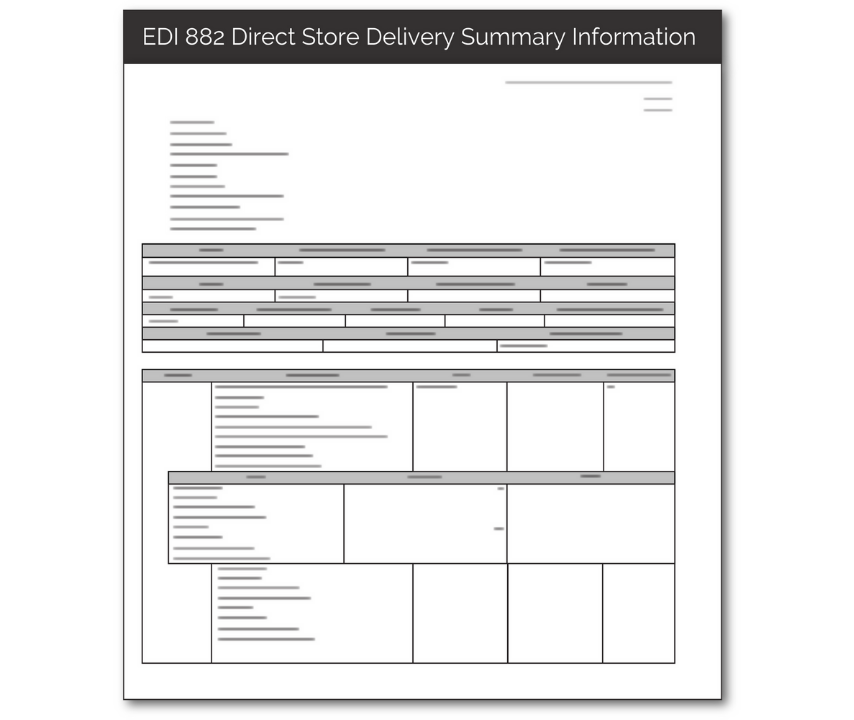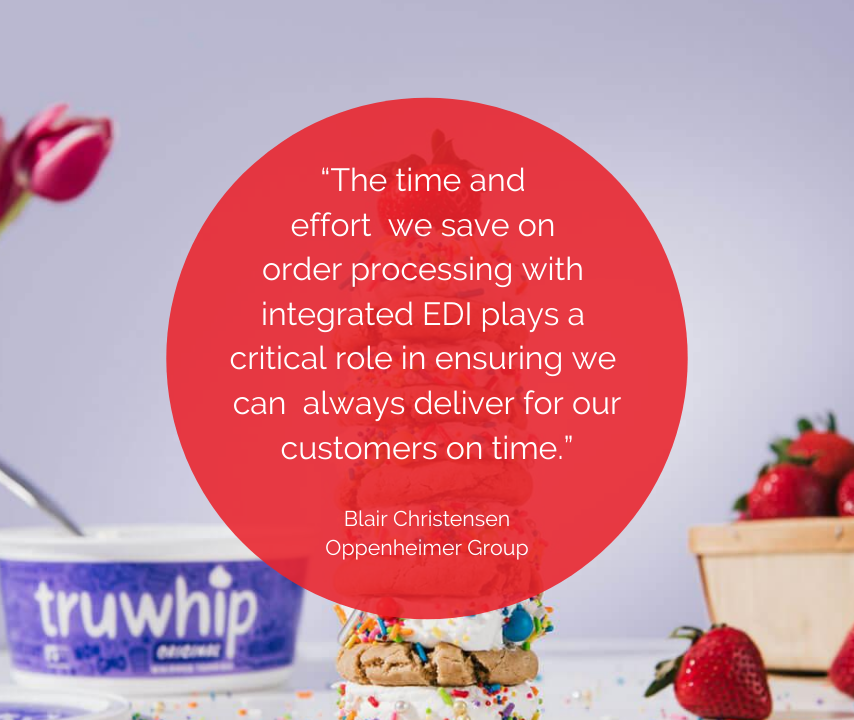EDI 882
Direct Store Delivery Summary Information

What is an EDI 882?
EDI 882, also known as a Direct Store Delivery Summary Information document, is an EDI transaction set most commonly used in the grocery industry by suppliers to account for a successful product delivery. EDI 882 is an overview, and does not contain product details, but rather addresses delivery, returns and adjustments information.
EDI 882 documents follow the x12 format set by the American National Standards Institute (ANSI), a not-for-profit organization that regulates EDI formats in the U.S.
What are the Essential Components of EDI 882?
This EDI transaction set needs to include key data regarding a particular order and its delivery. The following details may be included in an EDI 882 document:
- Supplier number
- Ship from/to addresses
- Summary of delivery, adjustment and return information
- Total amount due
- Request for payment


How do I Use EDI 882?
The EDI 882 Direct Store Delivery Summary Information transaction set is most commonly used by grocery suppliers, such as food and beverage manufacturers. Many grocery orders include perishable foods, or other items with a short shelf life. By delivering direct-to-store, and bypassing warehouses or distribution centers, suppliers can get the products on the shelves faster, giving them more time to sell.
EDI 882 documents are sent by grocery suppliers after the successful delivery. The transaction serves to summarize how the delivery went, and any returns or adjustments that occurred. EDI 882 can also indicate payments owed, request payment from the grocer or retailer, and denote any corresponding invoices. EDI 882 does not include detailed product information.
After receiving an EDI 882 transaction, retailers will usually send back an EDI 997 Functional Acknowledgement. They may also follow with an electronic funds transfer to pay for the order.
What are the Benefits of EDI 882?
Using EDI 882 to send Direct Store Delivery Summaries can help suppliers streamline communications with retailers and grocers. By automating this document, suppliers can save valuable time, and prevent errors from manual data entry. Because the document can be transmitted quickly, it also means the supplier can get paid quickly.
Sending this document via EDI also offers a more secure communication method than emails, PDFs, or faxes. Many EDI software providers use enhanced security protocols, along with data encryption and user authentication to help protect business and order details.
